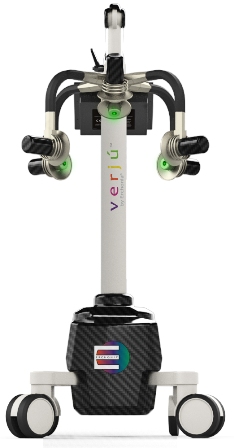It’s a laser that literally shrinks the fat cells in your body. There’s just one place in town where you can find the new technology. A fat zapping laser sounded too good to be true, so News 4’s Mackenzie Warren took a closer look…
Carrie Anderson has fought the scale most of her adult life. She’s tried everything-wacky fad diets, even surgery. “I actually did have liposuction several years ago and while happy initially with the results fat came back in other spots,” says Anderson.
Anderson decided to try a newer procedure that targets those trouble spot. She chose the Zerona laser at the Esteem Medical Spa inside Posh Salon on Crummer Lane. After 12 weeks, Anderson lost nearly 14 inches. Doctor Michael Glass, owner of Esteem Medical Spa, says the cold laser reduces the size of fat cells in the body, creating tiny holes in the cell. Once the contents seep into your body’s circulation, they’re metabolized and exit the body harmlessly. After a double-blind study the FDA approved Zerona for both safety and effectiveness.
The machine looks like an octopus with five arms. Each projects laser beams onto the stomach, thighs and waist: all in an attempt to sculpt your body into how you’d like it to look. “I’ve lost inches all over my body-places I didn’t expect my neck,” Anderson says proudly.
Each session takes 40 minutes and about six sessions in two weeks for a full effect. There is no anesthesia, pain killers needed, or down time afterwards. Anderson says she can’t even feel a thing when she’s getting the treatment.
Zerona isn’t cheap. Esteem charges $1800 for a month-long program that includes a two-week session with laser sessions every other day. There’s a week of prep beforehand and a week of measuring and assessments after the sessions. Dr. Glass says results are best if patients work out during the treatment. He also tells his patients to avoid coffee and alcohol since those beverages can change the water balance in your body. Dr. Glass says the procedure is safe with no known side effects.
And for Anderson the feeling of buttoning those forbidden skinny jeans makes Zerona worth every minute and penny.

 In between sessions I felt great, it was fun this idea of melting my fat while doing – ahem – nothing. You can’t drink alcohol while doing the treatments, so perhaps my diminished wine intake over 2 weeks helped melt a little fat too but however it works, I’ll take it. After the last session Dr. Jame told me to come back a week or so later because more fat would melt. I returned, we measured, and I lost! It worked: 9.5 inches overall. Here is the data to prove it:
In between sessions I felt great, it was fun this idea of melting my fat while doing – ahem – nothing. You can’t drink alcohol while doing the treatments, so perhaps my diminished wine intake over 2 weeks helped melt a little fat too but however it works, I’ll take it. After the last session Dr. Jame told me to come back a week or so later because more fat would melt. I returned, we measured, and I lost! It worked: 9.5 inches overall. Here is the data to prove it:





 cellulite on the thighs, buttocks and lower abdomen and for non-invasive body contouring of the waist, hips, and thighs.
cellulite on the thighs, buttocks and lower abdomen and for non-invasive body contouring of the waist, hips, and thighs.